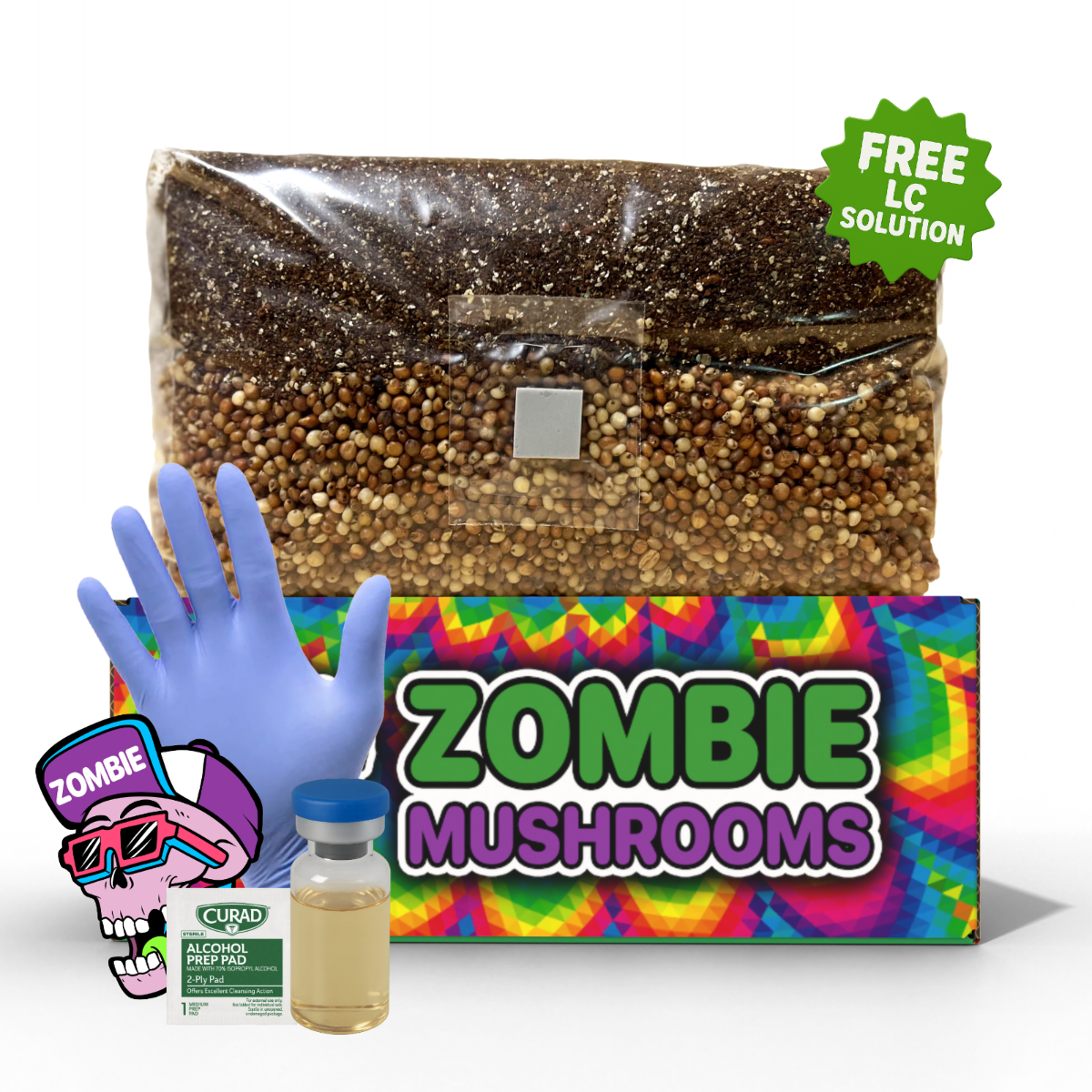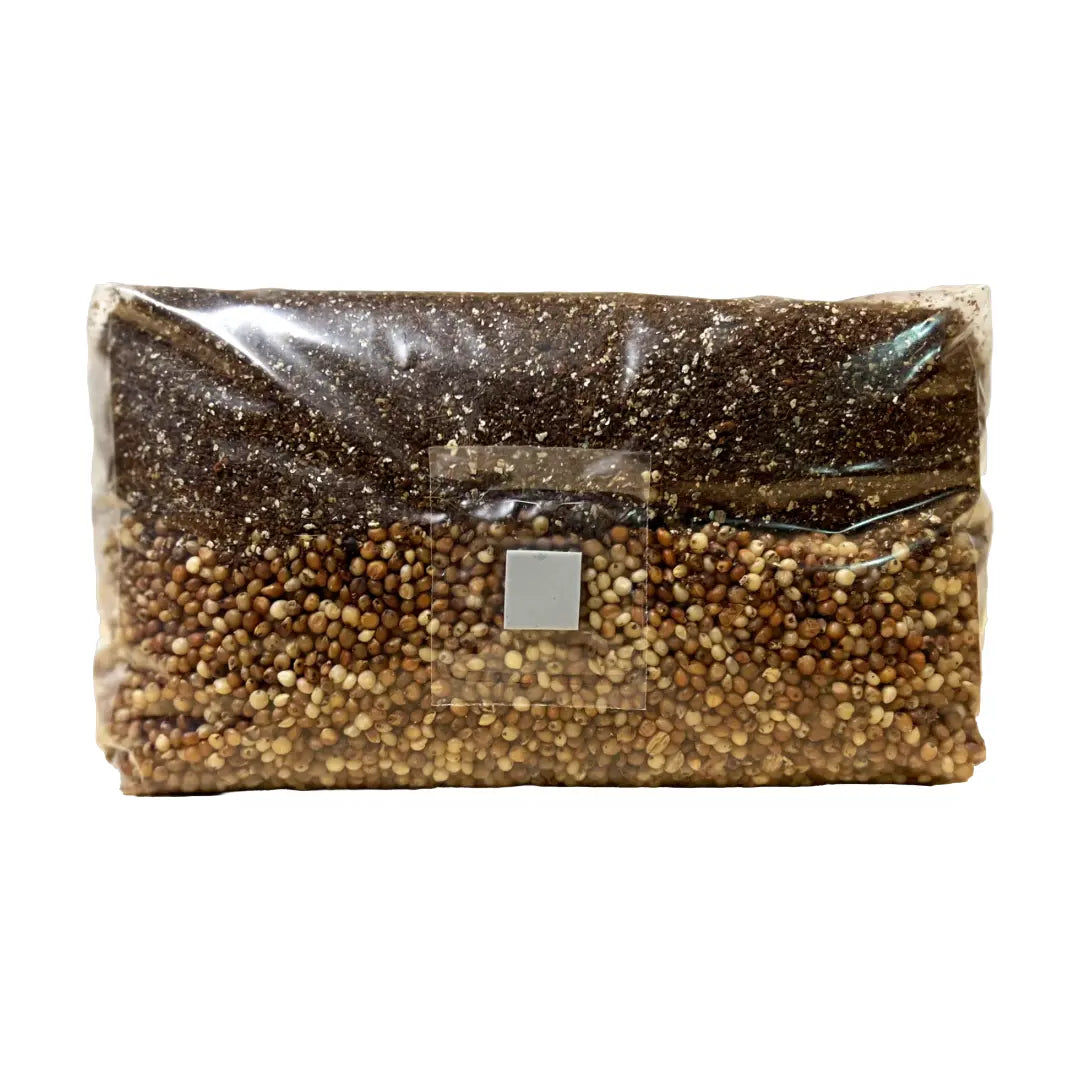- Reishi mushrooms (Ganoderma lucidum) have been utilized for over 2,000 years in conventional practice because of their properties that support the immune system.
- Perfect growing conditions for Reishi include temperatures between 70–85°F (21–29°C) and high humidity.
- A small greenhouse offers a controlled setting that speeds up Reishi growth and shields the mushrooms.
- Reishi mushrooms need about six weeks to ripen in a greenhouse setup, making them a long-term but worthwhile crop.
- Once picked, Reishi mushrooms can be dried and utilized in teas, tinctures, or powdered additions for medicinal advantages.
What Is Reishi?
Reishi mushrooms—nicknamed the “mushroom of immortality”—are prized for their striking look and potential health benefits. While many think they can only be farmed commercially, you can grow reishi mushrooms at home with the right tools. Using a mini greenhouse for mushrooms creates the perfect balance of humidity and fresh air exchange, making indoor cultivation far more reliable than leaving them in sealed bags. Paired with mushroom grow bags to start your cultures, this setup gives you steady colonization and consistent fruiting.
Conventional Chinese Medicine (TCM) has used Reishi for centuries to support long life, boost immune function, and improve overall wellness. Current studies assign these advantages to bioactive mixes like polysaccharides, which support immune health, and triterpenoids, which have anti-inflammatory and antioxidant traits (Lindequist et al., 2005). For modern growers interested in cultivating their own Reishi at home, starting with a reliable liquid culture can make the process smoother and more consistent, ensuring strong mycelial growth before moving on to bulk substrates.
Perfect Growing Conditions
In its natural setting, Reishi grows on decaying hardwood logs in thick, humid forests across Asia, North America, and Europe. To copy this setting, growers must keep
- Temperature: Reishi prospers in warmth, ideally between 70–85°F (21–29°C). Temperature changes outside this range can slow growth.
- Humidity: Reishi needs high humidity amounts, preferably around 75–90%, to encourage fruiting and stop the substrate from drying.
- Air Exchange: Good air flow aids in preventing mold contamination while making sure the mushrooms get enough oxygen.
- Light Exposure: Unlike many mushrooms that favor darkness, Reishi gains from indirect or low light, which aids in proper conk forming.
A small greenhouse offers a great way to control these conditions, making Reishi growth much more predictable and effective.

Reishi Growth Methods
There are multiple ways to grow Reishi mushrooms, but the two most usual methods are
Log-Based Growth (Conventional Outdoor Method)
Reishi naturally colonizes logs in the wild. Farmers and foragers have used this method for centuries by drilling holes into oak, maple, or beech logs, putting in Reishi mycelium (spawn), and sealing the holes with wax. Logs are then partly buried or placed in a shaded outdoor setting. However, this process takes 9–12 months for mushrooms to ripen.
Fruiting Blocks in a Small Greenhouse (Faster Indoor Method)
For home growers and those looking to speed up Reishi production, growing Reishi in sterilized hardwood sawdust blocks inside a small greenhouse is the most effective method. This setup lets mushrooms ripen within six weeks while staying shielded in a controlled humidity setting.

Step 1: Making the Fruiting Blocks
Fruiting blocks act as the nutrient-rich base for Reishi’s growth. These blocks copy decaying wood, which the mycelium takes in to make mushrooms. You can buy ready-made fruiting blocks or make your own with
- Hardwood Sawdust – The main food source for Reishi mycelium.
- Wheat Bran (Optional) – Added nutrients to improve growth.
- Water – Makes sure right moisture content in the substrate.
- Reishi Grain Spawn – Inoculates the sawdust with Reishi mycelium.
Steps to Prepare Fruiting Blocks
- Mix Ingredients: Combine sawdust, wheat bran, and water to make a moist substrate.
- Sterilize the Substrate: Place the mixture in heat-resistant bags and sterilize in a pressure cooker at 15 PSI for 90 minutes. This step gets rid of competing fungi.
- Inoculate with Reishi Spawn: Once cooled, introduce Reishi grain spawn into the sterilized substrate. Seal the bags and shake gently to spread the spawn.
- Colonization Period: Store the bags in a warm, dark setting (around 75–80°F) for 2–4 weeks until the mycelium fully takes over, turning the substrate white.

Step 2: Setting Up the Small Greenhouse
A small greenhouse makes a microclimate that encourages rapid colonization and fruiting. Here's how to build a simple yet effective setup
- Use a Storage Shelf or Rack: Metal or plastic shelving units work well as the greenhouse frame.
- Cover with Transparent Plastic Sheeting: This traps humidity while letting light to filter through.
- Keep Ventilation: Cut side slits or leave part of the plastic open to make sure air exchange. Alternatively, small computer fans can be installed for air flow.
- Add a Humidifier or Misting System: To keep humidity amounts above 80%, use a reptile fogger, humidifier, or manually mist the walls of the greenhouse with water.
- Place Reishi Fruiting Blocks Inside: Once fully colonized, transfer the blocks onto a moist layer of peat moss or garden soil within the greenhouse.

Step 3: Encouraging Fruiting
After transferring the fruiting blocks to the greenhouse, you’ll notice antler-like formations coming out within a week. These eventually grow into the distinct, fan-shaped conks Reishi is known for.
Maintenance Tips
- Monitor humidity daily, making sure it stays between 80–90% with periodic misting.
- Offer gentle air flow to prevent mold and bacterial contamination.
- Keep temperatures warm, ideally around 75°F, to speed up growth.
- Avoid direct sunlight, but make sure some light exposure to push conk forming.
Growth Timeline:
| Stage | Description | Approximate Duration |
|---|---|---|
| Colonization | Mycelium spreads through the substrate | 2–4 weeks |
| Pinning | Small "antlers" begin to come out | 1–2 weeks |
| Fruiting | Conks ripen, turning red and glossy | 6–8 weeks |

Step 4: Picking and Drying
Reishi mushrooms are ready for picking once
- The cap turns fully red and grows a smooth, lacquered surface.
- They begin releasing fine brown spores, often seen as dust on the surrounding surface.
- The white outer edge of the mushroom hardens or disappears.
Picking Tips
- Use a sharp knife or saw to cut the mushrooms at the base of the stem.
- Since Reishi is tough and woody, gloves may be helpful when handling it.
Drying & Storing Reishi
- Air drying: Slice Reishi into thin pieces and dry in a warm, well-ventilated area.
- Dehydrator: If using a food dehydrator, set to 95–110°F for 12–24 hours.
- Powdering: Once fully dried, grind Reishi into a fine powder using a coffee grinder or food processor for teas and capsules.

Step 5: Using Your Homegrown Reishi
Once picked and dried, Reishi mushrooms can be used for their medicinal traits in different ways
- Reishi Tea: Simmer sliced Reishi in water for 2–3 hours to pull out its mixes.
- Tinctures: Make an alcohol-based extract for concentrated advantages.
- Powder Supplements: Add finely ground Reishi to smoothies or capsules to add into your daily diet.
FAQ
Q1: How long does it take to grow reishi mushrooms in a mini greenhouse?
Reishi mushrooms typically take 2–3 months from inoculation to harvest. Using mushroom grow bags can shorten colonization time and help prevent contamination.
Q2: What substrate is best for growing reishi mushrooms?
Reishi grows best on hardwood sawdust, wood chips, or supplemented substrates. Many growers prefer ready-to-use grain spawn or sawdust-based grow bags for reliable results.
Q3: Can reishi mushrooms grow without a mini greenhouse?
Yes, reishi can grow on outdoor logs or in larger indoor tents, but a mini greenhouse offers better control over humidity and airflow, leading to consistent harvests.
Q4: Do reishi mushrooms need light to grow?
Reishi doesn’t photosynthesize, but indirect light helps signal fruit body formation. Place your mini greenhouse in a space with indirect sunlight or use a simple LED grow light.
Q5: Are reishi mushrooms difficult for beginners to grow?
They can be trickier than oyster mushrooms, but with proper tools—like mushroom grow bags and a greenhouse setup—beginners can still succeed.
Final Thoughts
Reishi growth using a small greenhouse offers a working way to grow medicinal mushrooms at home. Though slow-growing, Reishi rewards patient growers with powerful health advantages. Whether using it in teas, tinctures, or additions, homegrown Reishi supports wellness and immune health—making every effort in its growth worthwhile.
References
- Hapuarachchi, K. K., Cheng, C. R., Wen, T. C., & Xu, J. (2018). A review of Ganoderma lucidum and its potential benefits on human health. Phytotherapy Research, 32(11), 2275-2290.
- Sanodiya, B. S., Thakur, G. S., Baghel, R. K., Prasad, G. B. K. S., & Bisen, P. S. (2009). Ganoderma lucidum: A potent pharmacological macrofungus. Current Pharmaceutical Biotechnology, 10(8), 717-742.
- Lindequist, U., Niedermeyer, T. H. J., & Jülich, W. D. (2005). The pharmacological potential of mushrooms. Evidence-Based Complementary and Alternative Medicine, 2(3), 285-299.



